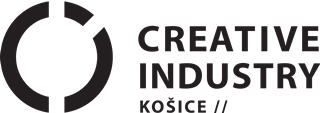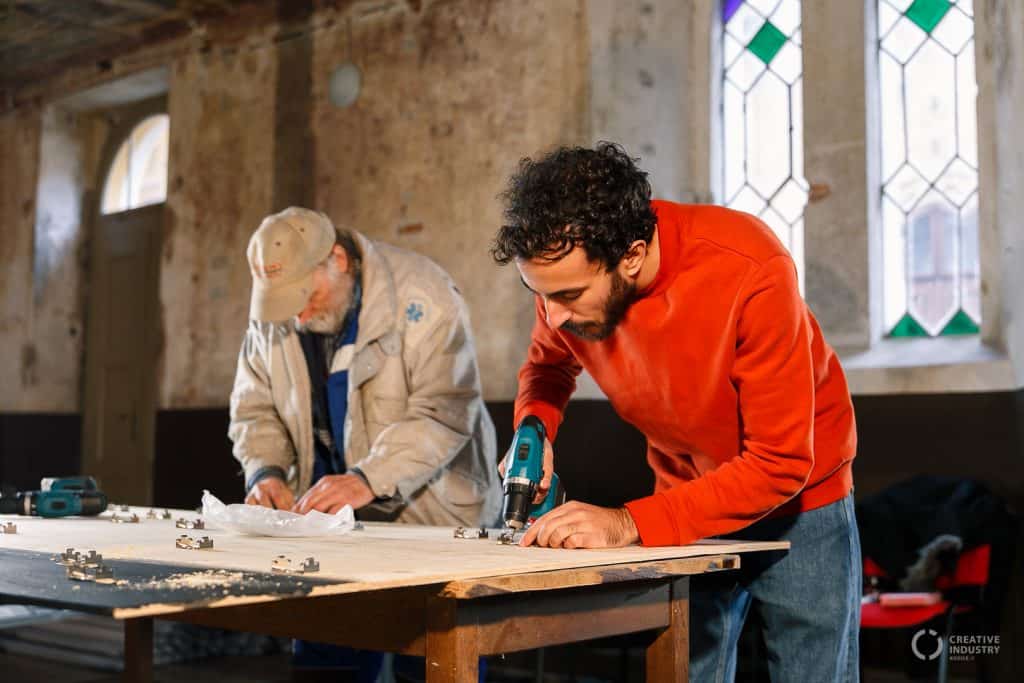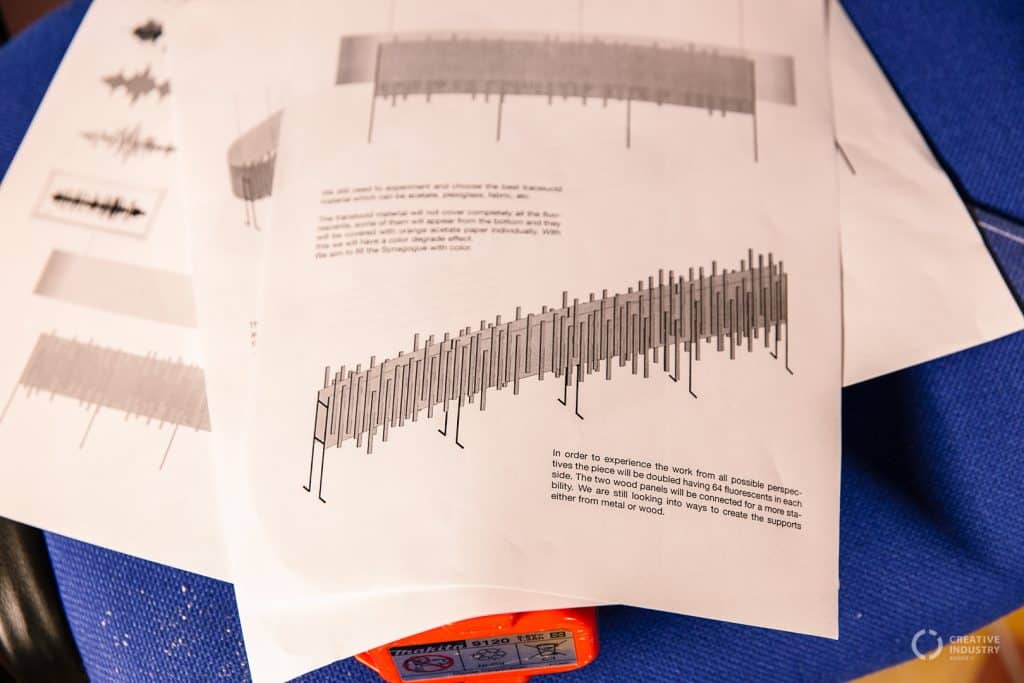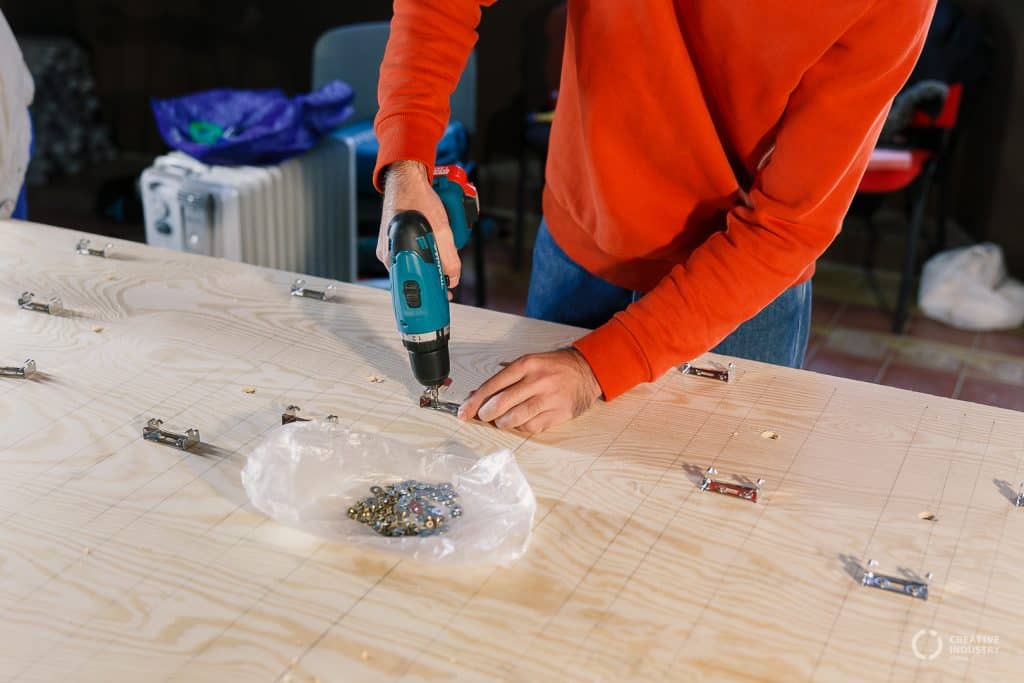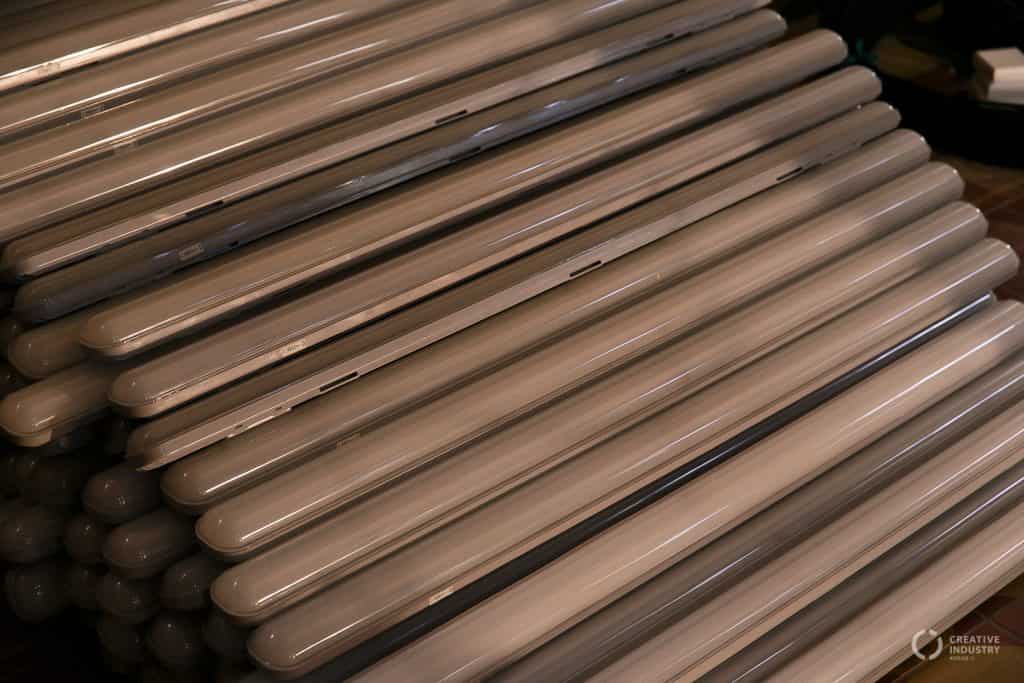He plays the saxophone in a way you’ve never seen before. Marc is a sound artist fascinated by the experience of listening, and in this case, the listening of sounds which he – as a human – cannot hear. During his artistic residency in Košice, he has worked on a new artwork that aims to unveil the invisible sounds of our everyday life. Marc Vilanova will launch the Art & Tech Days festival of media art and technology with the opening of his exhibition in the Synagogue on Zvonárska Street. Read about his work and experience him as a speaker at the Art & Tech Conference along with his special performance.
Marc, what does your artwork say, and what inspired you to create it in Košice?
As a sound artist, I’m very inspired by the experience of listening, and how it evolves with new technologies. So I was first inspired by the intersection of art and technology. In this case, I wanted to listen to the sounds that go beyond what we can hear as humans, beyond our limits of perception. Our audible range is capable to perceive frequencies between 20Hz and 20kHz, but many other sounds are surrounding us, the ones below our audible range are called infrasound and the ones above, ultrasound.
When I arrived in Kosice I started to reach out to several scientists in the field of infra and ultrasounds. One of the studies they shared with me was medical research applying infrasound on rats with diseases such as epilepsy. The experiments show how this sound, although not being audible for the rats, have a significant impact on decreasing the amount of disorder that epilepsy causes on their brains.
Another study from Germany shows how people living near wind farms have problems sleeping at night and suffer a little stress. The study measures the strong level of infrasound that windmills produce and draws lines between the exposure to this sound and the negative effects on their wellbeing.
The truth is that scientists haven’t determined yet the real impact of infrasound and ultrasound on hearing, mental health, cognitive abilities and general wellbeing. Numerous things indicate that sound at these frequencies can be perceived and can influence human beings. However, the precise mechanisms of this perception are unknown at present and this lack of understanding is reflected by the unsatisfactory status of the existing regulations and standards.
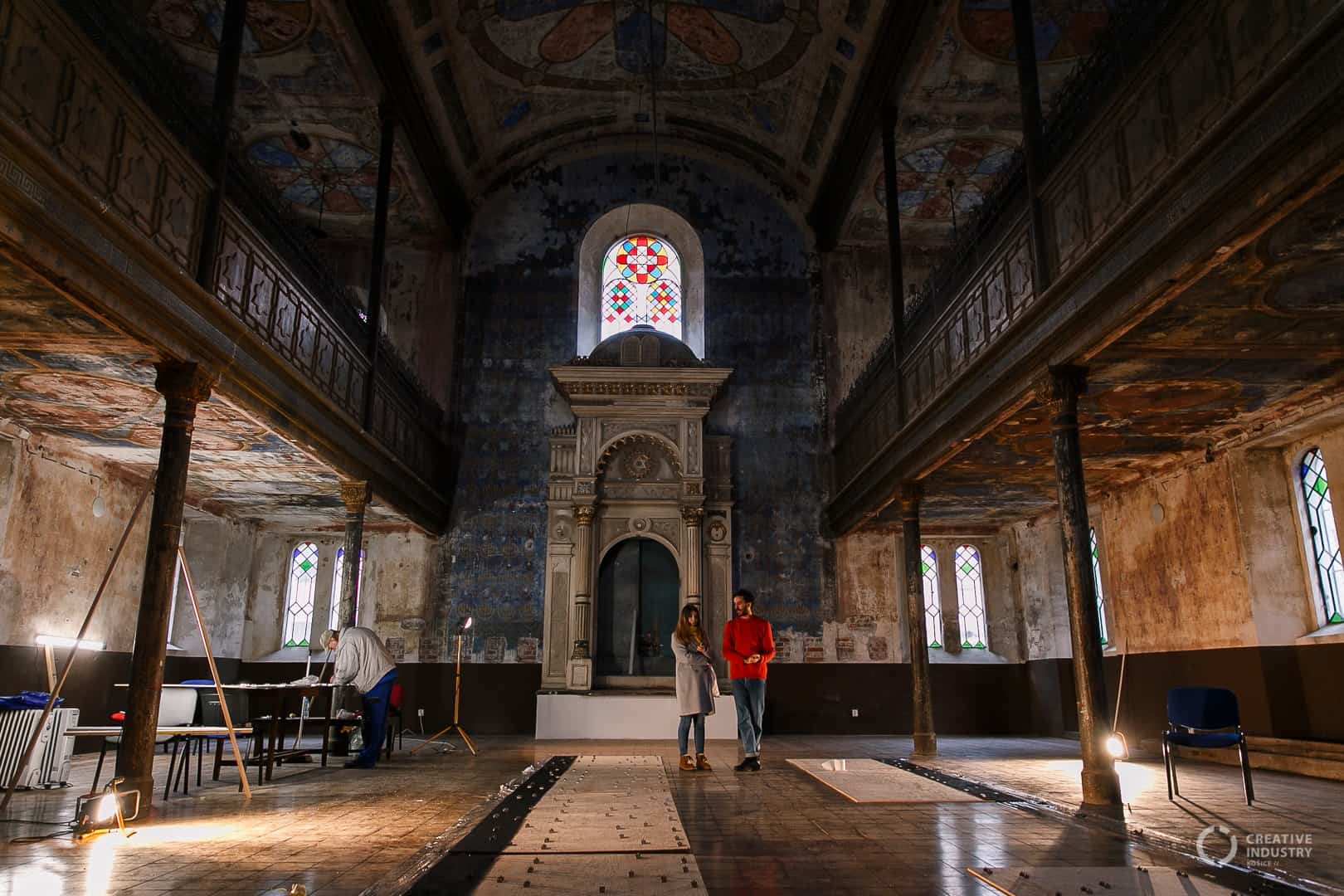
What will it look like once it’s done?
It will be a site-specific installation that uses a very common object of our everyday life: the fluorescent lamp. Besides light, the lamp produces a constant ultrasound. Using a special microphone we captured those ultrasounds and translated them into audible frequencies.
The composition uses only those invisible sounds produced by the lamps. This sonic material triggers a choreography of light composed of 128 fluorescents which are displayed in the shape of their ultrasonic waveform. The sculpture is surrounded by a yellow filter, a colour known by its ability to increase our concentration and perceptual capacity, enhancing other organs than the ear on sensing those frequencies.
I named the piece Limen, which means threshold, the place in between, the boundary of perception, a term that gives the linear form to the structure and divides the synagogue in two. The sculpture acts as a threshold between our perception limits, between the visible and the invisible, the hearable and the inaudible, between what we can sense and what goes beyond.
You studied saxophone, so you’re a pure artist. Where does this tech part come from?
I studied classical saxophone, yes. I also played in orchestras and chamber music ensembles for a while, until I went for Erasmus in Helsinki where I found an amazing music and technology department. There I started to work with my instruments and basic tech equipment like different microphones, sensors, Arduino, etc. After a while, the exploration with technology was growing exponentially and I started to feel restricted by my instrument, so I slowly transited into installation work.
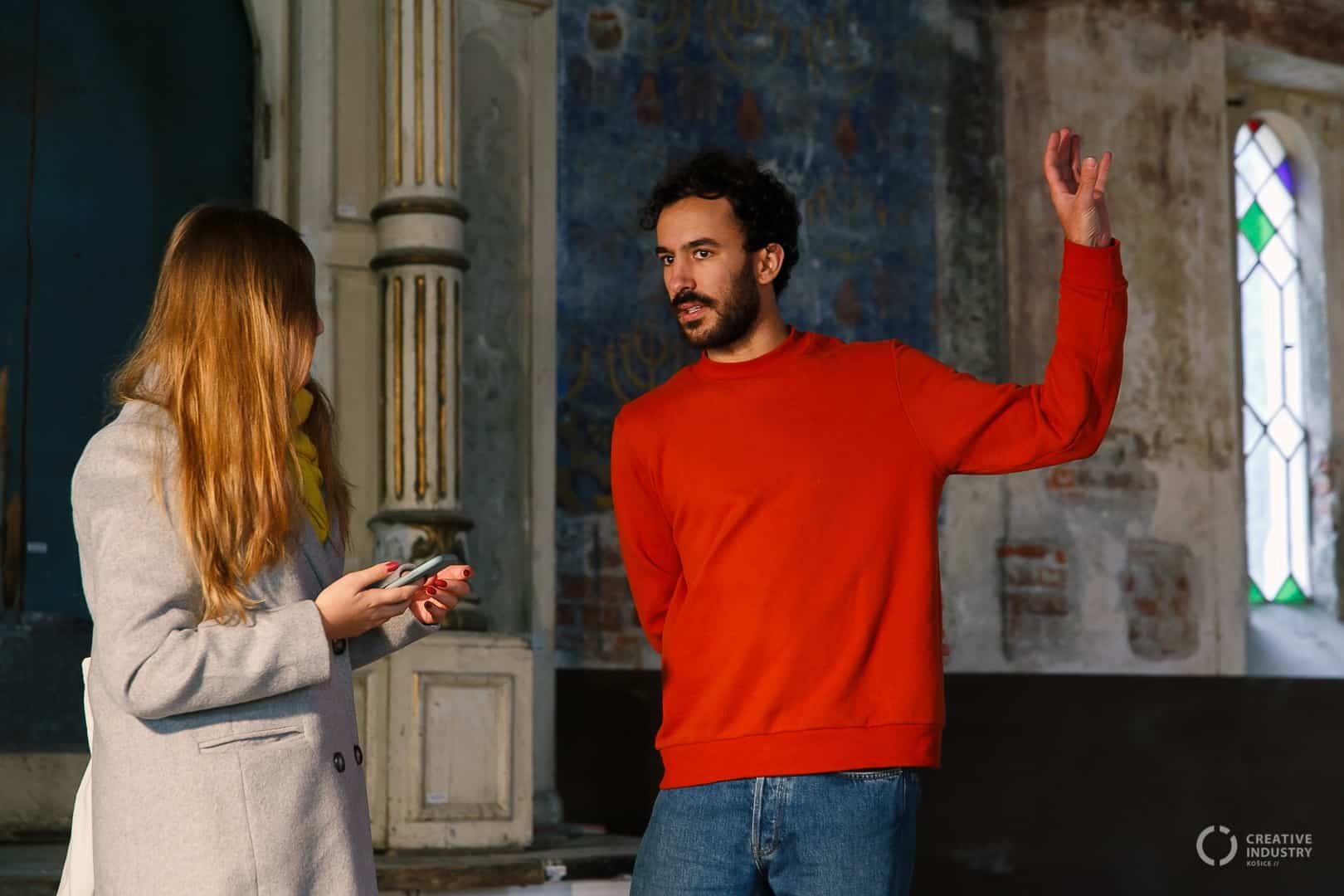
Where can we meet you during Art & Tech Days?
You can meet me during this exhibition at the Synagogue, but I will also be a speaker at the Art & Tech Conference where I will do a performance. I will improvise a little solo inspired on the way we listen to language. Not understanding a language enhances sensitivity to the sound of syllables as they are pronounced, but as soon as one understands the language, the mind’s focus shifts to decoding meaning. For this occasion, I’m aiming to translate this experience to the saxophone by creating a very unique vocabulary of sounds, some of which are not typically associated with the instrument.
So far you’ve created several art installations. Can you choose your favourite one?
It’s a difficult question. Perhaps this will be my favourite in the future. If I had to choose from my previous work, it would be a piece called Aresta. It uses an ensemble of saxophones which don’t need humans to play them anymore. The music is generated by a computer using AI, played through the instruments and synchronized with LEDs placed inside their bodies. When the installation starts to perform, it looks very much alive and communicates perfectly with its surroundings. I like that kind of technology.
You had exhibitions in a lot of countries. Is there one that you liked most?
Yes, I have been moving from project to project without any base for the last 3 years which is quite exhausting. That’s why I prefer to work in projects that last at least 2 or 3 months, such as this residency here in Kosice. From the cities, I travelled I liked Montreal in Canada for example. But the truth is that the more I travel, the more I like the city I come from. So, many places have stolen my heart, but I love Barcelona the most.
Your residence in Košice is coming to an end. How did you enjoy your stay?
Košice is a very cute and calm city in comparison to Barcelona. I enjoyed the White Night very much for example. There is a very good balance in Košice between cultural activities and time to focus on your work. I also love my studio at Šopa Gallery. I’m happy I got to know Košice thanks to CIKE and KAIR and I see them as the best organizations in the city.
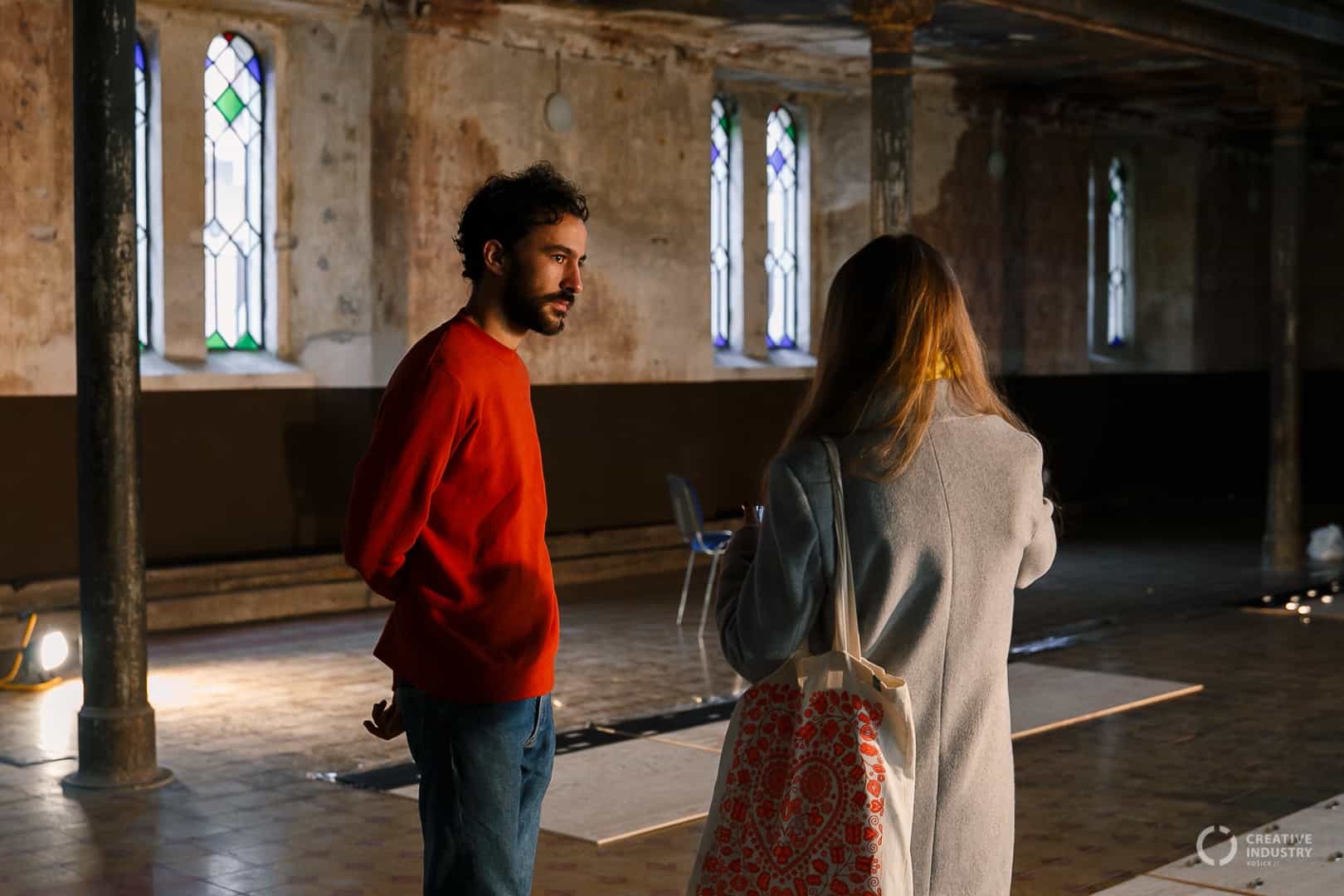
The opening of Marc’s exhibition is at 6 pm on Tuesday, November 19, 2019, at the Synagogue on Zvonárska 7 in Košice. After the opening, it will be available daily from 4 pm until 6 pm until 22 November. Admission is free.
